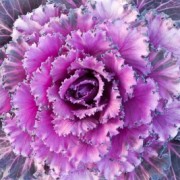Products Categories
Prouducts Search
Growing Tips with LED Lighting |
| AUTHOR : Date : 2013-09-23 5:07:01 |
Growing Tips with LED LightingAs a photographer’s technical expertise deepens, so his careful balancing of aperture, shutter speed and film sensitivity grows ever more complex. The principle can be applied to any discipline, and so it is with growing plants, only in the world of horticulture, we seek to understand and manipulate not white balance and depth of field, but the matters of temperature, nourishment and, of course, light. In our attempt to reach that perfect balance of the right ingredients, our decision making regarding light takes into account such issues as the strain of plant, its geographical location, the type of greenhouse, and the heat balance. These things will influence not only the intenstity of the light, but also its distance from the plant, angle, and wavelength mix. Such high level fine-tuning complexity is made possible with an increasingly sophisticated knowledge of plant requirements, and the tremendous advances made in LED technology, which have allowed for incredibly specific light types to be manufactured. With that in mind, there are perhaps a few basic light-related strategies that can help us along the way as we try to achieve healthy and economical plant growth. Firstly, distance from the subject. LEDs produce far less radiant heat than other forms of lighting and, as a result, the plant tissue damage that would otherwise occur is not an issue. Nevertheless, place your lamp too close to the plant and growth could be stunted, and place it too far away and stretching will take place, as the plant goes and seeks out its light source. Therefore, for grow lamps of 240 watts and 450 watts, for example, 25-30 inches and 30-35 inches respectively from the top of the canopy is an ideal distance. As the plant grows, it will be able to process more light and absorb more water and other nutrients, so you may gradually move the lamps closer. Continue to carefully manage room temperatures, with 70 and 85 degrees Farenheit a good environment for growth to take place and since, as previously stated, LEDs to not have the heat issues associated with other forms of lighting, be aware that less watering may be required. If you are growing in soil, you may wish to use a soil dampness meter, but all you need to do is wait until the soil is a little dry and then water once more. Similarly, because LED grow lights are specially manufactured to produce exactly the kind of light your plants want, focusing all their energy usage into emitting precisely the wavelength combinations to which plants photosynthetically respond, far less soil nutirents are necessary (about 30% less, in fact) to achieve the same level of growth. So a little background knowledge of LED lighting can go a long way, and help considerably as we fine-tune our understanding of successful plant growth. |




 LED Tube Light
LED Tube Light
